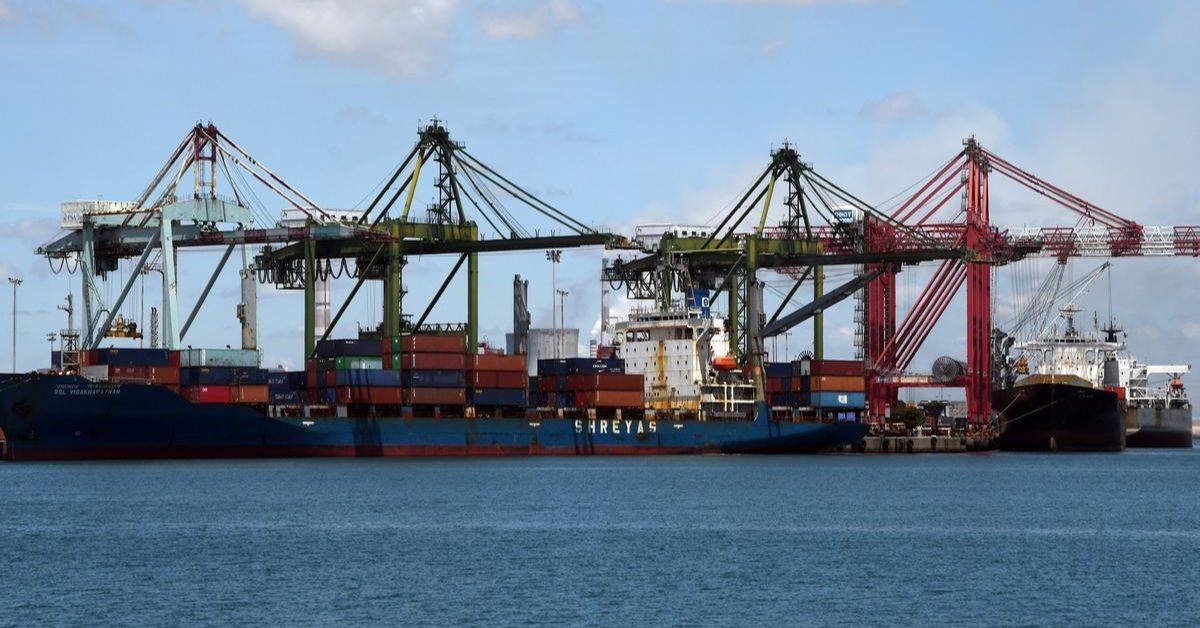The tender terms have been kept unchanged from the previous attempt to conform to a government stand that the project parameters approved by the Cabinet and the tender conditions can be changed only after two attempts turn futile.
V O Chidambaranar Port Authority, the state-owned entity that runs the port at Thoothukudi in Tamil Nadu, is testing the waters yet again by floating a fresh tender to build an ambitious 4 million twenty-foot equivalent units (TEUs) capacity container terminal in the southern port’s outer harbor with private funds of Rs 7,055.95 crore. On October 30, the port authority cancelled a six-month-long tender for the project after the two groups that filed initial bids failed to qualify for the project.
The tender terms have been kept unchanged from the previous attempt to conform to a government stand that the project parameters approved by the cabinet and the tender conditions can be changed only after two attempts turn futile.
The fact that potential bidders were not enthusiastic about the project was evident right from the start after the tender was floated in February this year. During a road show in Mumbai in March and the subsequent pre-bid meetings, potential bidders drew the attention of the port authority on concerns over what they cited as “unrealistic” cost estimates worked out by the VOC Port Authority with the help of the National Technology Centre for Ports, Waterways and Coasts (NTCPWC) under the Indian Institute of Technology Madras (IITM) on dredging and breakwater construction.
The National Technology Centre for Ports, Waterways and Coasts, the technology arm of the Ministry of Ports, Shipping and Waterways, was hired on a nomination basis by VOC Port Authority to write the Detailed Project Report (DPR) for the mega project.
Based on the NTCPWC DPR, the port authority has penciled in Rs 698.45 crore for constructing a 5,535 km-long breakwater and Rs 1,233.51 crore for dredging the basin and outer harbour channel (with dredging quantity of 10.96 million cubic metres) for the first phase of the project and Rs 187.11 crore (1.23 million cubic metres) for the second stage of the facility.
While IIT Madras has been providing technical services to VOC Port for many years, this was the first time it wrote a “commercial proposal” for the port, covering traffic forecast, cost estimate, financial analysis and viability, among other things. The port authority has sought bids based on the lowest viability gap funding (VGF) quoted by bidders for developing the project, marking a departure from the model followed so far by the Union government owned major ports wherein cargo handling contracts are finalised on the basis of the highest royalty per TEU or per ton of cargo quoted by the bidders.
The VGF has been capped at Rs 1,950 crore or actual quote, whichever is lower. The VGF of Rs 1,950 crore translates into 27.64 per cent of the total project cost (which is less than 40 per cent of the project cost available under the VGF scheme).
During the road show, potential bidders expressed the view that the project cost estimated by the state-owned port authority in a global tender was lower by “at least 50 per cent”, which would make it difficult to place a price bid and expose them to risks later.
Hence, potential bidders had urged the port authority to “re-visit” the cost estimates or else to raise the viability gap funding to 50 per cent of the project cost to make it attractive. The port authority said that it was seeking VGF only because of loading the breakwater construction and capital dredging costs onto the private entity developing the project. “Otherwise, there would not have been a requirement of VGF for a port development project only,” the port authority told the Public-Private-Partnership Appraisal Committee (PPPAC) when it scrutinized and approved the project on November 29, 2023.
To sweeten the deal, the port authority offered a ten-year holiday on revenue sharing by the private operator. The revenue share of 1 percent will commence from the 11th year from the date of the award of the concession, which will escalate by 1 percent every year with a cap of 35 percent.
Besides, the Minimum Guaranteed Cargo (MGC) to be handled by the operator will be applicable only from the 16th year from the date of award of concession. From the 16th to the 20th year, the MGC has been set at 2 million TEUs, from the 21st to the 25th year, it will be 2.4 million TEUs and from the 26th to the 45th year, it will be 2.8 million TEUs.







